What Do Willie Wagtails Eat? (Diet + Behavior)
Last updated: 8 August 2022

- What do Willie Wagtails eat in the wild?
- What fruits do Willie Wagtails eat?
- How often do Willie Wagtails eat?
- How do Willie Wagtails find food?
- Do Willie Wagtails visit feeders?
- What time of day do Willie Wagtails feed?
- What do Willie Wagtails eat in the winter?
- What do Willie Wagtails eat in the summer?
- What do baby Willie Wagtails eat?
- Is it OK to feed Willie Wagtails?
- What can I feed Willie Wagtails?
- What not to feed Willie Wagtails?
- What do Willie Wagtails drink?
- How do you attract Willie Wagtails?
- Are Willie Wagtails good to have around?
The Willie Wagtail, also referred to as the Willy Wagtail, (Rhipidura leucophrys) is a widespread and familiar bird that occurs all over Australia. They frequent a variety of different habitats from sea level to high altitudes, avoiding only dense forested areas.
Their habit of foraging in suburban gardens, parks, and farming areas makes them a common sighting and leaves many people wondering just what these lively little birds feed on.
Willie Wagtails are insectivorous birds. Most of their prey consists of insects, although they also eat other invertebrates like spiders and even small vertebrates like geckos and small fish. Willie Wagtails hunt their prey by catching it in the air, although they will also grab terrestrial invertebrates from the ground or glean them from the branches and foliage of shrubs and trees.
Willie Wagtails are a delight to have around in the garden, but they are not the easiest birds to feed.
Providing natural habitat by planting a variety of native Australian plants is the best way to feed these birds (and many others), even if it is a rather roundabout way of going about it.
A clean freshwater source will also attract these birds who enjoy bathing and drinking from bird baths.
Read along to learn more about the diet of a familiar and cheerful Australian bird, the Willie Wagtail.
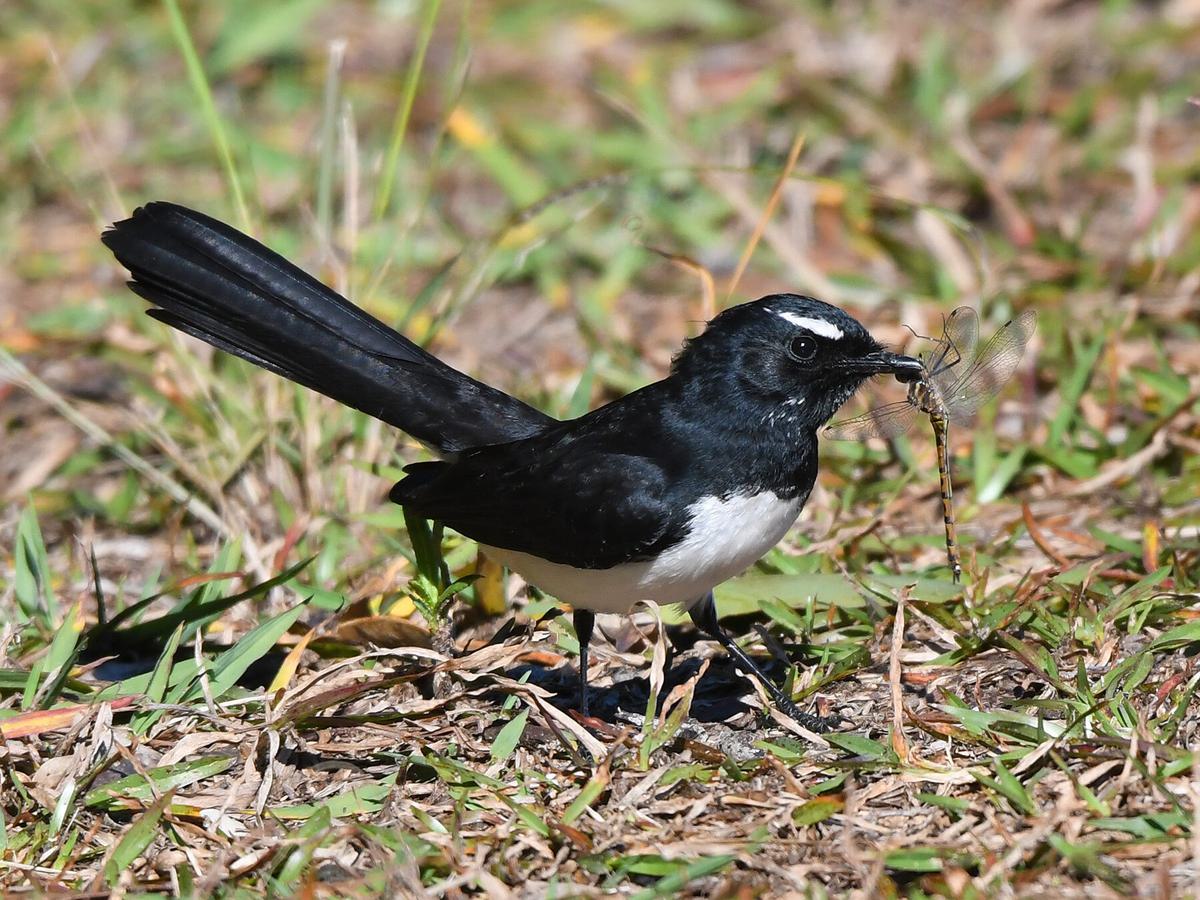
Willie Wagtail with a freshly caught insect
What do Willie Wagtails eat in the wild?
Willie Wagtails are primarily insectivorous. The majority of their prey measure less than a centimetre in length, although meals of over 3 cm are occasionally taken. Flies and beetles are the two most important prey items of the Willie Wagtail, but they also feed on a variety of invertebrates, and even some small vertebrates like reptiles and fish.
Willie Wagtails generally feed on the following prey items:
- Flies
- Wasps
- Bees
- Beetles
- Grasshoppers
- Flying ants
- Dragonflies
- Butterflies
- Cicadas
- Millipedes
- Centipedes
- Moths

Willy Wagtail foraging for food
What fruits do Willie Wagtails eat?
Willie Wagtails do not usually eat fruit. They rarely eat plant material, although have been recorded feeding on seeds. Fruit left out to attract insects could provide them with an extra hunting opportunity, however.
How often do Willie Wagtails eat?
Willie Wagtails feed multiple times throughout the day. They are diurnal birds, which means they do all their feeding during the daylight hours.
Continue reading to learn how Willie Wagtails find and catch their prey.
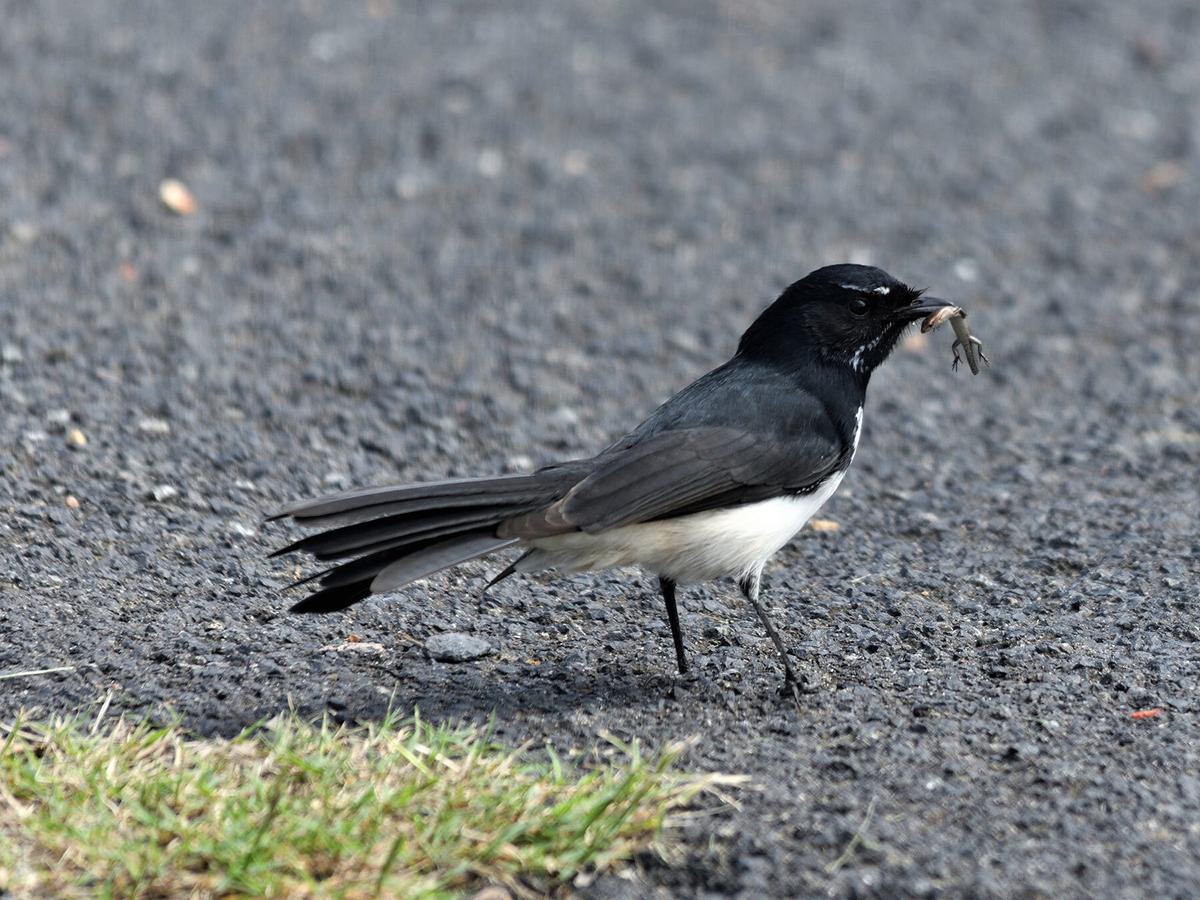
Willie Wagtail feeding on a small lizard
How do Willie Wagtails find food?
Willie Wagtails have various strategies for finding their food. They can rely on their sharp eyesight to spot flying insects and those crawling on the ground below.
They will often hunt from a perch, flying out to catch a meal and then returning to eat it. They will also actively search for insects in vegetation or even try to flush them out into the open where they are easy to catch.
Willie Wagtails get their descriptive name from their habit of shaking their tails from side to side and flashing their wings. These antics serve an important purpose for finding food, however. These active birds often run along the ground while performing these movements.
The flashing created by the shade of their wings and tail is thought to disturb insects which can then be captured.
These resourceful little birds are also known to follow larger animals as they walk through the bush because the insects they disturb become easy pickings. Willie Wagtails will even follow people around for the same reason!
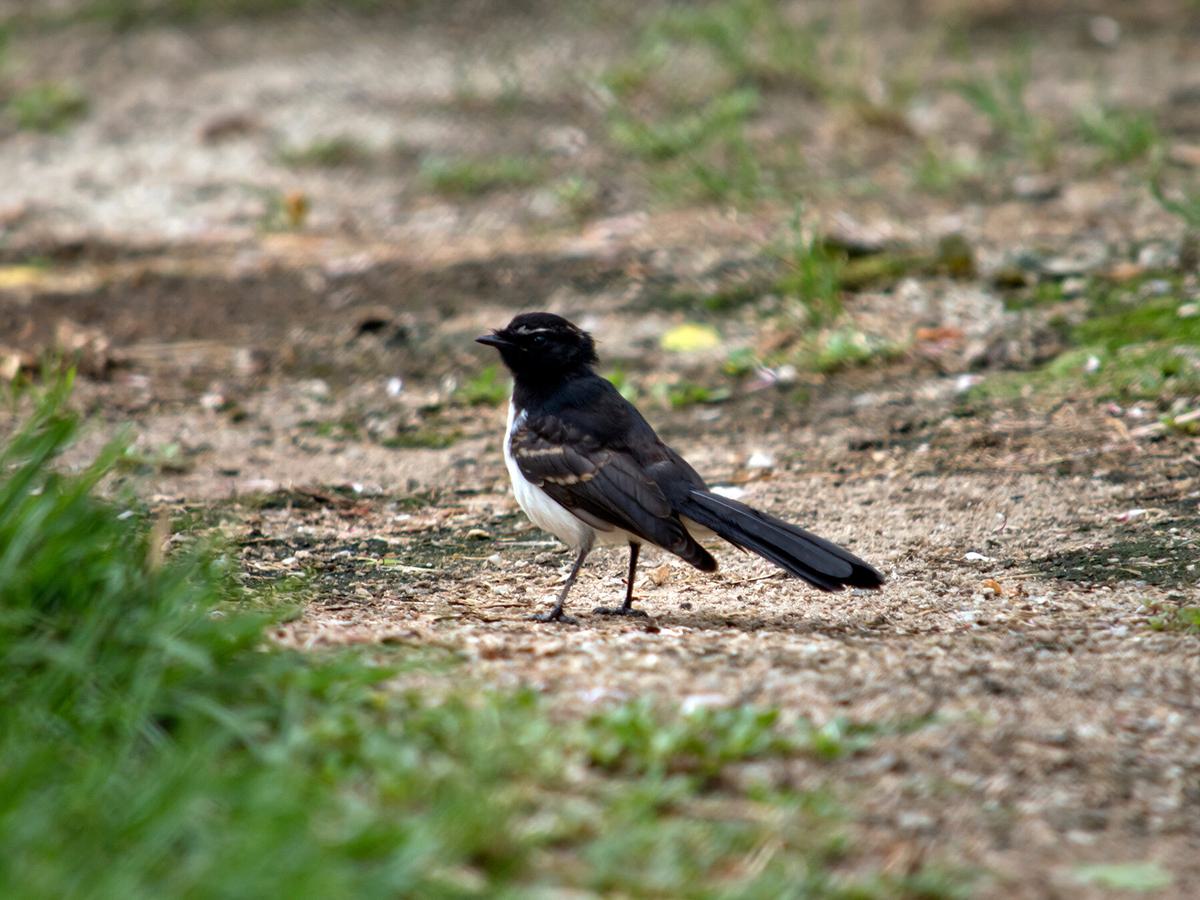
Willie Wagtail foraging for insects on the grass
Do Willie Wagtails visit feeders?
Willie Wagtails are not attracted to bird feeders because they feed primarily on live insects and other invertebrates. They could be attracted to live mealworms in a feeder but it would be more practical to watch these bold little birds forage for themselves.
What time of day do Willie Wagtails feed?
Willie Wagtails are highly active little birds that feed pretty consistently through the day. Insect activity varies as the day progresses, however, so the birds may adapt their foraging strategy.
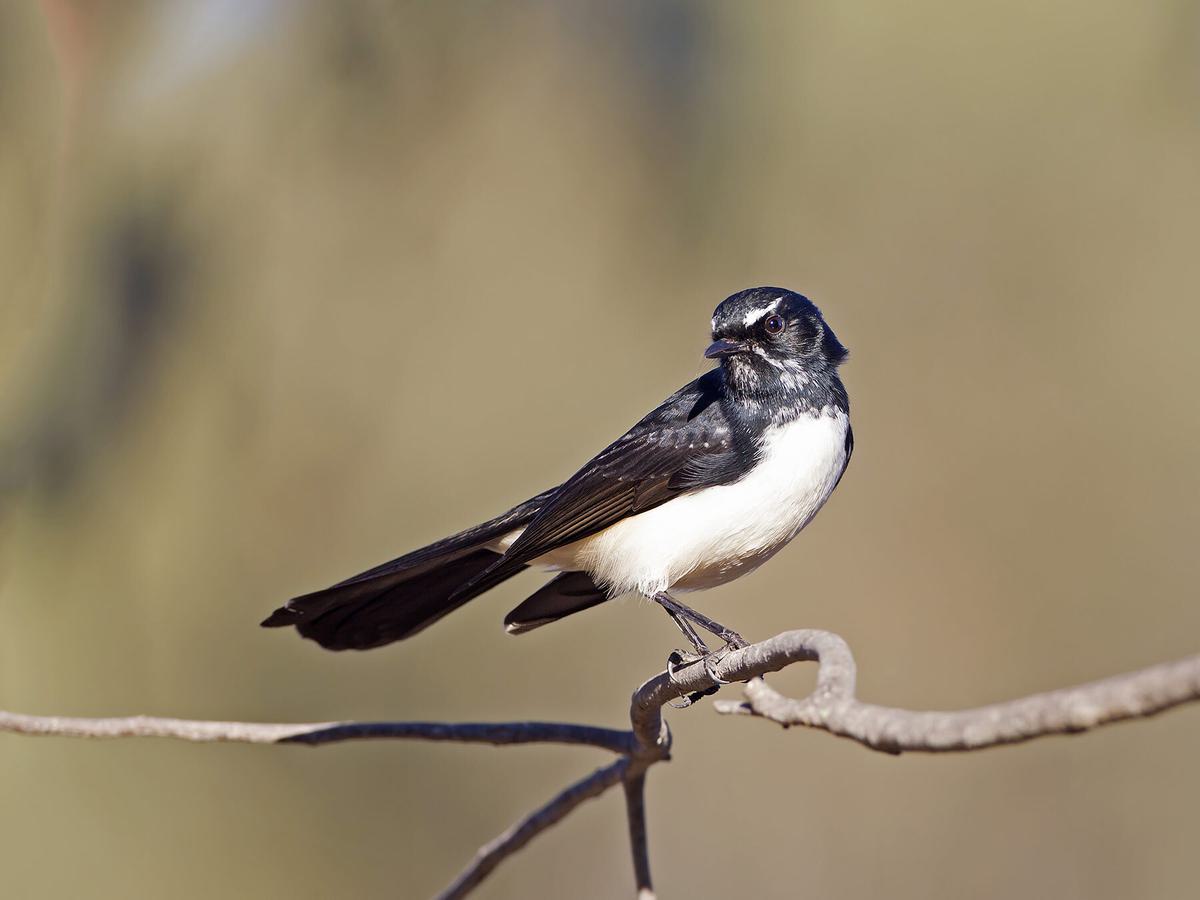
Close up of a perched Willie Wagtail on a tree branch
What do Willie Wagtails eat in the winter?
Willie Wagtails feed on invertebrates and sometimes even small animals like lizards and fish. The winter months bring a decrease in activity from these cold-blooded creatures which triggers a change in hunting strategy.
During this time, Willie Wagtails may catch the majority of their prey by gleaning, which involves plucking the invertebrate from the ground or a plant surface.
What do Willie Wagtails eat in the summer?
A large percentage of the Willie Wagtails’ summer diet consists of flying insects. In New South Wales, for example, over 83-85% of their food is caught in the air between October and March.
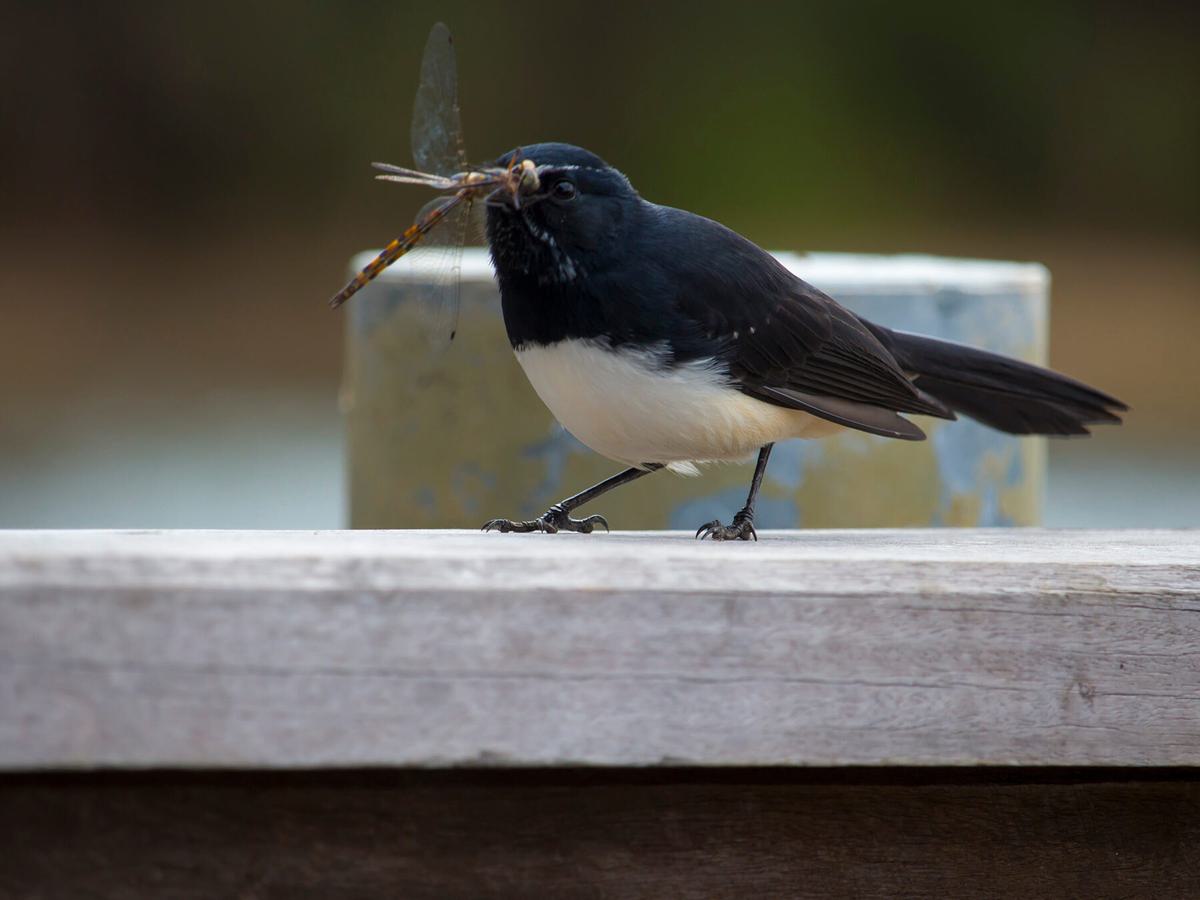
Willie Wagtail with a dragonfly caught in its beak
What do baby Willie Wagtails eat?
Baby Willie Wagtails are fed a diet of insects and other invertebrates. The food items their parents provide are typically larger than what their parents keep for themselves.
This makes sense as an energy-saving strategy, which saves the adult birds from flying to and from the nest more often than necessary. This strategy may also help to keep the location of the nest hidden from predators.
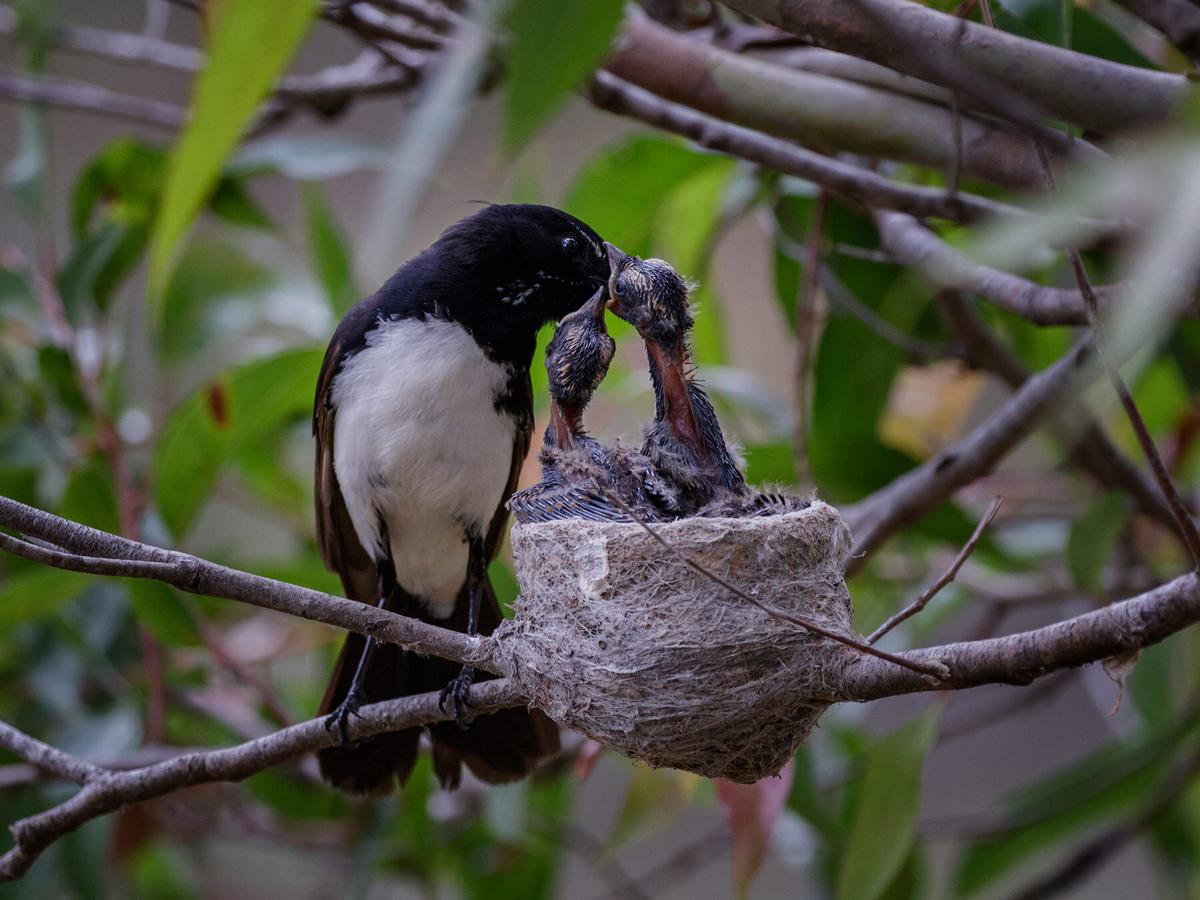
Willie Wagtail female feeding chicks in the nest
Is it OK to feed Willie Wagtails?
It is probably OK to feed Willie Wagtails an occasional snack of mealworms, but they should not be overfed or allowed to become dependent on people for food.
It is next to impossible to provide them with a healthy, balanced diet, and they are certainly more than capable of feeding themselves.
What can I feed Willie Wagtails?
Willie Wagtails feed on live insects, which are usually caught in the air, although they also feed from the ground and vegetation. This type of food is difficult to provide. Mealworms and crickets can be used, but it is far easier to leave these busy birds to catch their own prey.
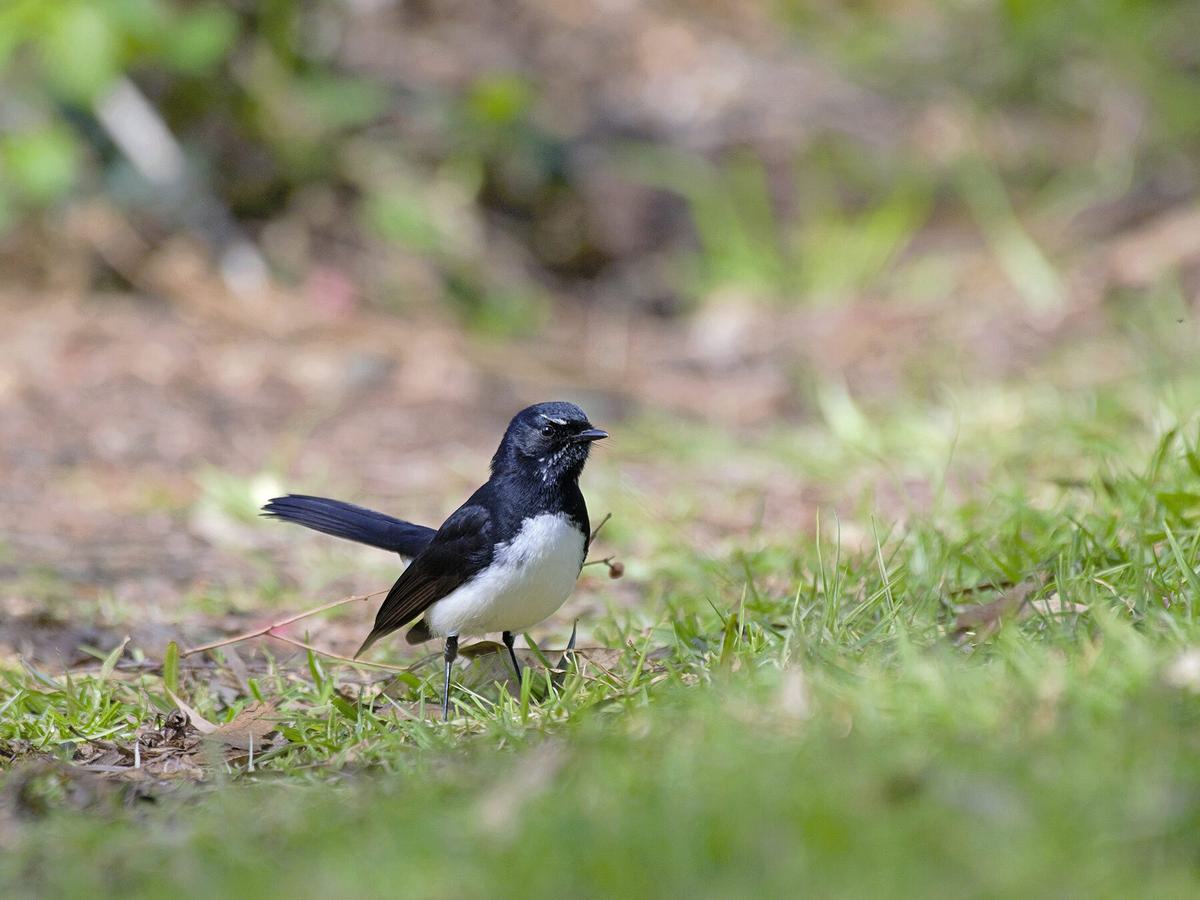
Willie Wagtail on the ground, looking for insects to eat
What not to feed Willie Wagtails?
Willie Wagtails will not be attracted to bird seed, bread, or fruit. They should not be fed large amounts of food because you will probably not be able to recreate the natural diversity of their prey items.
What do Willie Wagtails drink?
Willie Wagtails regularly drink fresh water. They probably derive much of their water needs from their insect prey, however.
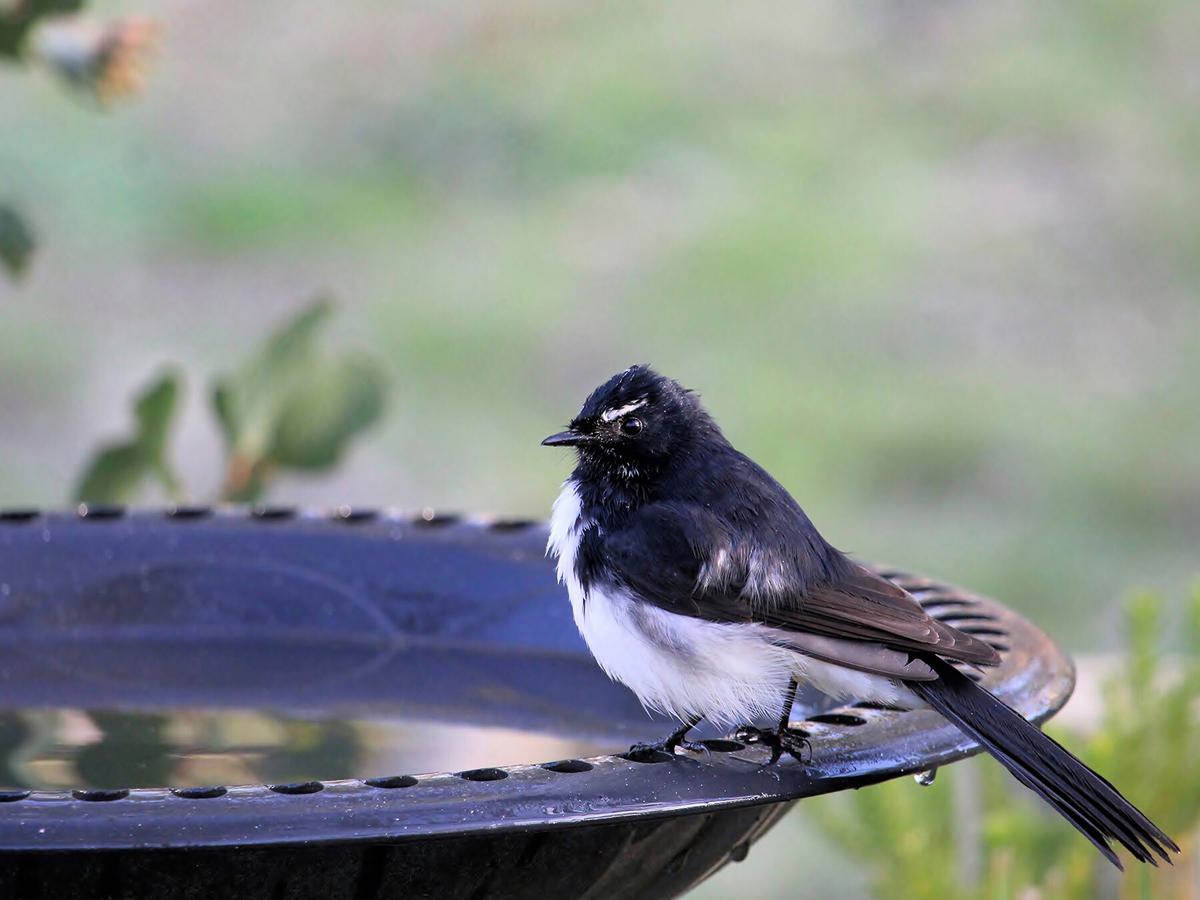
Willie Wagtail taking a drink of water from a bird bath
How do you attract Willie Wagtails?
Willie Wagtails are not attracted to bird feeders, and the best way to attract them is with good foraging and nesting habitat and by providing fresh water.
A healthy garden with lawn areas, native shrubs, and plenty of leaf litter will give Willie Wagtails great hunting grounds, and a bird bath will make the area even more attractive.
Are Willie Wagtails good to have around?
Willie Wagtails are wonderful birds to have around. They are a pleasure to watch and they do a good job of keeping insect numbers down. The Willie Wagtail has a beautiful song, although their habit of singing loudly on moonlit nights can put them in conflict with light sleepers!
On this page
- What do Willie Wagtails eat in the wild?
- What fruits do Willie Wagtails eat?
- How often do Willie Wagtails eat?
- How do Willie Wagtails find food?
- Do Willie Wagtails visit feeders?
- What time of day do Willie Wagtails feed?
- What do Willie Wagtails eat in the winter?
- What do Willie Wagtails eat in the summer?
- What do baby Willie Wagtails eat?
- Is it OK to feed Willie Wagtails?
- What can I feed Willie Wagtails?
- What not to feed Willie Wagtails?
- What do Willie Wagtails drink?
- How do you attract Willie Wagtails?
- Are Willie Wagtails good to have around?

